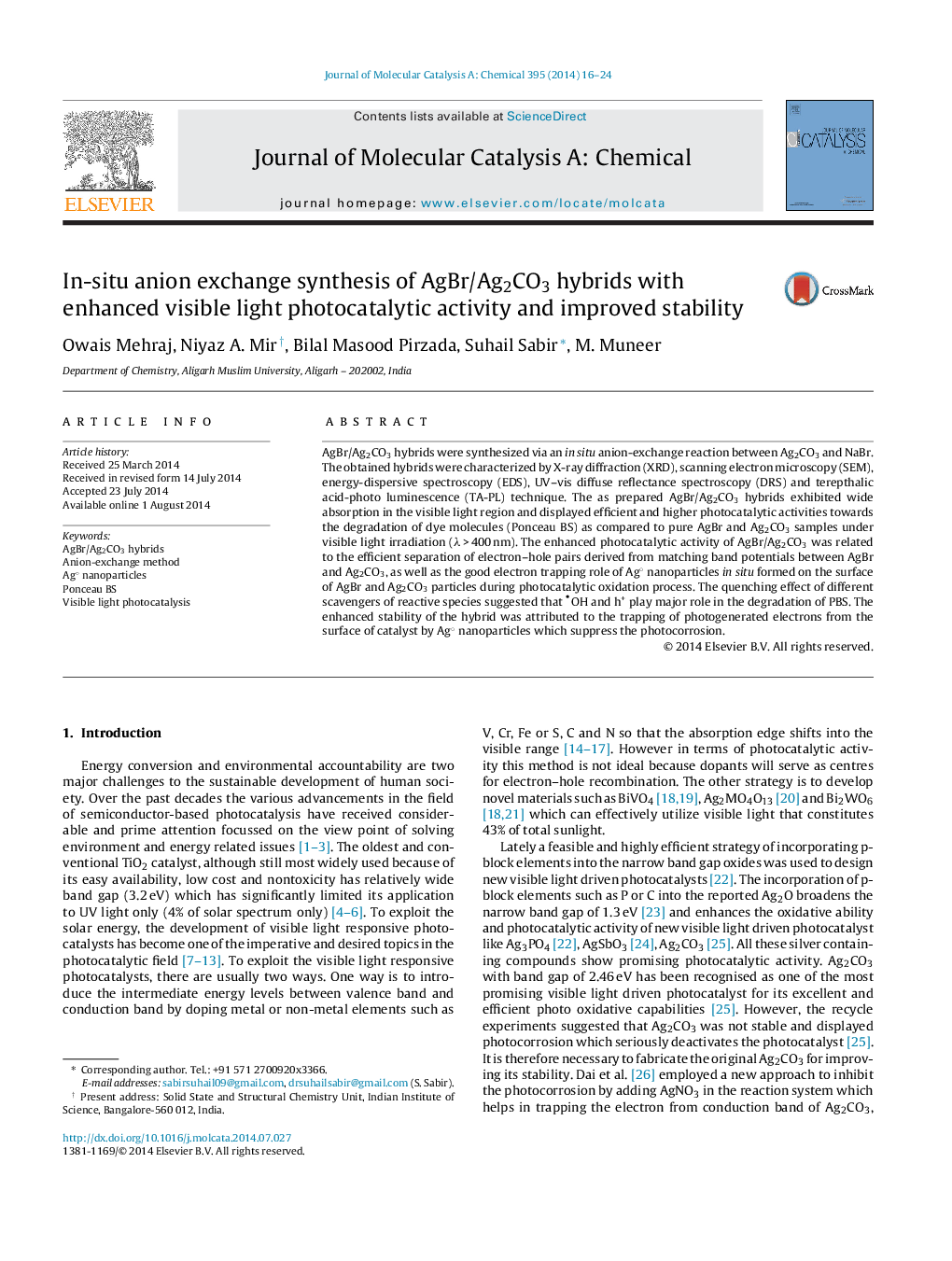| Article ID | Journal | Published Year | Pages | File Type |
|---|---|---|---|---|
| 65291 | Journal of Molecular Catalysis A: Chemical | 2014 | 9 Pages |
•AgBr/Ag2CO3 hybrids were synthesized via in situ anion exchange reaction between Ag2CO3 and NaBr.•The hybrids showed enhanced visible light activity compared to pure AgBr and Ag2CO3.•AgBr/Ag2CO3 hybrids showed improved stability than pure Ag2CO3 crystal.
AgBr/Ag2CO3 hybrids were synthesized via an in situ anion-exchange reaction between Ag2CO3 and NaBr. The obtained hybrids were characterized by X-ray diffraction (XRD), scanning electron microscopy (SEM), energy-dispersive spectroscopy (EDS), UV–vis diffuse reflectance spectroscopy (DRS) and terepthalic acid-photo luminescence (TA-PL) technique. The as prepared AgBr/Ag2CO3 hybrids exhibited wide absorption in the visible light region and displayed efficient and higher photocatalytic activities towards the degradation of dye molecules (Ponceau BS) as compared to pure AgBr and Ag2CO3 samples under visible light irradiation (λ > 400 nm). The enhanced photocatalytic activity of AgBr/Ag2CO3 was related to the efficient separation of electron–hole pairs derived from matching band potentials between AgBr and Ag2CO3, as well as the good electron trapping role of Ag° nanoparticles in situ formed on the surface of AgBr and Ag2CO3 particles during photocatalytic oxidation process. The quenching effect of different scavengers of reactive species suggested that OH and h+ play major role in the degradation of PBS. The enhanced stability of the hybrid was attributed to the trapping of photogenerated electrons from the surface of catalyst by Ag° nanoparticles which suppress the photocorrosion.
Graphical abstractFigure optionsDownload full-size imageDownload high-quality image (197 K)Download as PowerPoint slide
